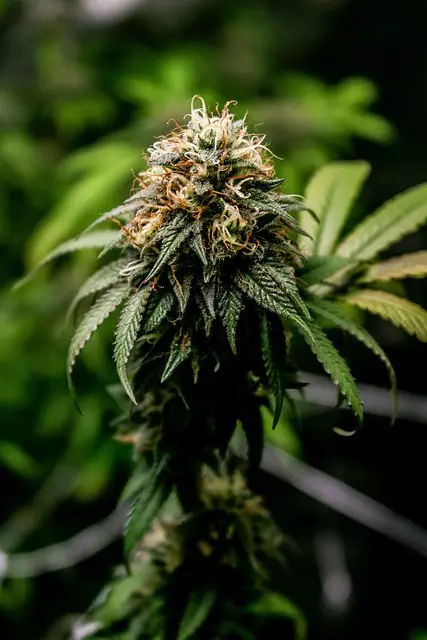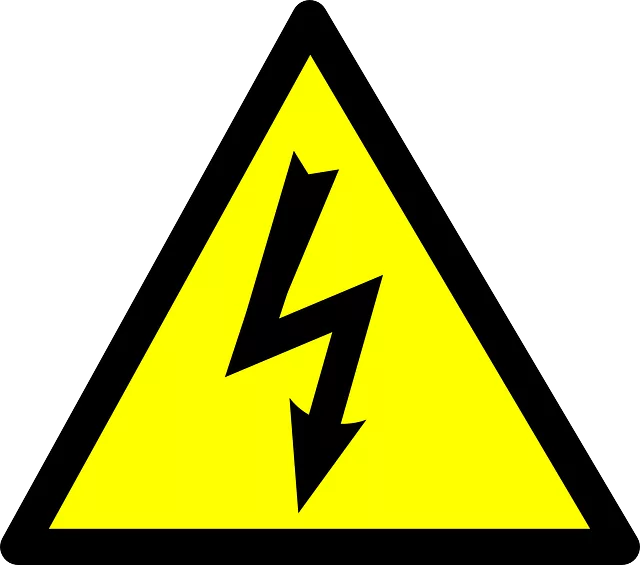High potency cannabinoids (HPCs), particularly THC and CBD, are at the forefront of research due to their diverse medicinal and therapeutic applications. Their efficacy is influenced by factors such as concentration, interaction with the endocannabinoid system, administration method, individual metabolism, and ambient conditions. Recent studies emphasize the importance of consistent dosing and standardized cannabinoid products to ensure patient safety and reliable outcomes through rigorous analytical testing at every production stage. Advanced technologies like HPLC and mass spectrometry are crucial for accurately quantifying cannabinoid levels, while process control innovations and SOPs with quality control software help maintain stable production conditions for product consistency. Compliance with Good Manufacturing Practices (GMP) and legal regulations is imperative to navigate the dynamic legal landscape and uphold market trust. Blockchain technology adds a layer of transparency from cultivation to consumer, reinforcing the integrity of HPC products in the marketplace.
Exploring the intricacies of high potency cannabinoids requires a deep dive into the factors that influence their consistency across various products and batches. This article dissects the science behind cannabinoid potency, detailing its effects on users, and scrutinizes the critical steps in the extraction process to maintain high standards. It also navigates the complex legal landscape surrounding these compounds. Through advanced technology and stringent quality control measures, the quest for consistent cannabinoid potencies is addressed head-on, ensuring users receive reliable, high-quality products every time. Join us as we delve into the world of high potency cannabinoids, where precision and compliance are paramount.
Understanding High Potency Cannabinoids: A Comprehensive Overview

High potency cannabinoids represent a significant area of interest within the cannabis research and therapeutic communities due to their potential effects and medicinal properties. These compounds, such as THC (tetrahydrocannabinol) and CBD (cannabidiol), are known for their distinct pharmacological activities. Understanding the specific cannabinoids and their respective potencies is crucial for tailoring treatments to individual patient needs. The potency of a cannabinoid is not solely determined by its concentration but also by how it interacts with the human endocannabinoid system, which plays a role in regulating a range of physiological processes.
Research into high potency cannabinoids has led to a better grasp of their bioavailability and efficacy across various delivery methods. This comprehension is vital for consistent dosing, as the variability in effects can be influenced by factors such as strain, method of consumption, individual metabolism, and environmental conditions. The standardization of cannabinoid products is an ongoing effort to ensure that patients receive a predictable and safe experience with each use. This standardization is achieved through rigorous testing and quality control measures, which help maintain the integrity and potency of these compounds throughout the supply chain. Understanding high potency cannabinoids involves not just recognizing their potential but also ensuring their safe and effective application in therapeutic and recreational contexts.
The Science Behind Cannabinoid Potency and Its Effects on Users

The science behind cannabinoid potency is a complex interplay of chemical properties and biological interactions that dictate the effects experienced by users upon consumption. High potency cannabinoids, such as THC (tetrahydrocannabinol) and CBD (cannabidiol), exert their influence through the body’s endocannabinoid system, a network responsible for maintaining homeostasis. The variability in individual responses to these compounds is influenced by factors including dose, route of administration, and the user’s unique physiology and metabolism.
THC, known for its psychoactive effects, can produce a wide range of experiences from euphoria to relaxation, depending on its potency and the user’s tolerance. On the other hand, CBD is often sought after for its therapeutic properties, including pain relief and anxiety reduction, without the psychoactive high associated with higher potency cannabinoids. The precise dosing of these compounds is crucial as both under- and over-consumption can lead to adverse effects or inadequate relief. Understanding the relationship between cannabinoid potency and user experience is essential for safe and effective use, guiding consumers to make informed choices based on their specific needs and conditions. This comprehension not only enhances personal well-being but also paves the way for further research into the medicinal applications of these powerful compounds.
Factors Influencing Potency Consistency in Cannabinoid Products

The consistency of potency in cannabinoid products is a critical aspect that impacts both the efficacy and safety for consumers. High potency cannabinoids, such as THC and CBD, are subject to variability in their concentrations due to several factors throughout the cultivation, extraction, and manufacturing processes. The soil composition, climate conditions, and genetic variations of the cannabis plants can influence the initial potency of the harvested crop. Precise agricultural techniques and controlled environmental parameters are essential to maintain a consistent baseline potency before processing begins.
Once harvested, the consistency of potency relies heavily on the refinement methods used during product formulation. Extraction technologies, such as supercritical CO2 extraction or ethanol-based processes, play a pivotal role in extracting cannabinoids with high accuracy and purity. The subsequent formulation stages, including distillation and encapsulation, must be rigorously standardized to avoid discrepancies in the final product’s cannabinoid content. Quality control measures are paramount; they ensure that each batch of cannabinoid products maintains the same high potency, which is critical for consumer trust and therapeutic reliability. Analytical testing at multiple points throughout the production process is necessary to verify and confirm the potency consistency of high potency cannabinoid products, thereby upholding regulatory standards and ensuring patient safety and efficacy.
Analyzing the Extraction Process: Ensuring High Potency Across Batches

In the realm of cannabinoid extraction, maintaining high potency across successive batches is a critical aspect that demands meticulous attention to detail and robust standard operating procedures. The extraction process for high potency cannabinoids involves intricate steps that must be precisely controlled to ensure consistent levels of active compounds. Initial stages include precise temperature and pressure control during the solvent extraction phase, which is crucial for optimal cannabinoid yield without compromising potency. Subsequent purification steps, such as distillation or chromatography, further refine the product to remove impurities and concentrate the desired cannabinoids. To guarantee batch-to-batch consistency, it is essential to use uniform starting material and maintain stringent process parameters throughout the extraction methodology. Advanced analytical techniques, including high-performance liquid chromatography (HPLC) and gas chromatography (GC), are employed post-extraction to accurately quantify cannabinoid concentrations, ensuring that each batch meets the required potency specifications. By adhering to these rigorous standards, manufacturers can produce high potency cannabinoid products with confidence, providing consumers with a consistent and reliable experience. Quality assurance protocols are also integral to this process, with regular testing at various stages to detect any deviations from the expected potency, thus allowing for corrective actions before the final product is released for consumer use. This commitment to excellence in the extraction process is what distinguishes high-quality cannabinoid products and ensures that users receive the intended effects consistently.
Potency Testing and Quality Control Measures in Cannabinoid Manufacturing

In the realm of cannabinoid manufacturing, ensuring high potency cannabinoids is paramount for product efficacy and consumer safety. The process begins with meticulous potency testing, which is essential to confirm the concentration of active compounds such as CBD, THC, and CBN within the final product. Advanced analytical techniques like High-Performance Liquid Chromatography (HPLC) are employed to accurately measure cannabinoid levels. These methods provide precise quantification, ensuring that each batch meets the required potency specifications. Quality control measures are rigorously implemented throughout the manufacturing process, from cultivation to extraction and formulation. Each step is carefully monitored to maintain consistency in cannabinoid content, thereby guaranteeing a reliable and effective end product for consumers seeking therapeutic or recreational use. The commitment to high potency cannabinoids is not just a quality standard but a cornerstone of trust and legitimacy in the industry. Manufacturers who adhere to these stringent testing and control measures differentiate themselves by providing products with consistent and predictable effects, aligning with regulatory standards and enhancing consumer confidence.
Navigating Legal Considerations for High Potency Cannabinoid Products

When delving into the realm of high potency cannabinoid products, it is imperative to navigate the complex legal landscape that governs their production, sale, and consumption. The regulatory environment for such products varies significantly across jurisdictions, necessitating a thorough understanding of local, state, and federal laws. Manufacturers must adhere strictly to guidelines set forth by authoritative bodies, which include obtaining the necessary licenses and permits to legally produce these concentrated cannabinoid compounds. Compliance with Good Manufacturing Practices (GMP) is also critical to ensure product safety and consistency, minimizing the risk of contamination or mislabeling that could lead to adverse effects for consumers.
Moreover, the legal framework extends to labeling requirements where potency and dosage information must be accurately conveyed to users. This transparency is crucial not only for consumer safety but also for maintaining trust in the cannabinoid market. Additionally, staying abreast of emerging regulations and potential policy changes is a dynamic challenge for industry players. As the scientific community continues to study the effects of high potency cannabinoids, legal standards may evolve, potentially opening new avenues for product development while also imposing stricter controls. It is through diligent adherence to legal requirements that companies can maintain a reputation for quality and integrity in the burgeoning high potency cannabinoid sector.
The Role of Technology in Achieving Consistent Cannabinoid Potencies

In the realm of cannabis product development, achieving consistent cannabinoid potencies is paramount for consumer safety and satisfaction. High potency cannabinoids such as THC and CBD must be accurately quantified and maintained across different batches to ensure a uniform experience for users. The integration of advanced technology plays a pivotal role in this endeavor. Sophisticated analytical equipment, like mass spectrometry and high-performance liquid chromatography, enables precise measurements of cannabinoid concentrations. These tools are instrumental in identifying even trace amounts of active compounds, ensuring that each product meets the labeled potency. Moreover, process control technologies such as automation and real-time monitoring systems help maintain consistent production conditions, which is crucial for the stability of the final product’s efficacy. By leveraging these technological advancements, cannabis producers can guarantee that their high potency cannabinoid products deliver predictable and reliable effects every time, thereby enhancing consumer trust and safety in the marketplace.
The implementation of standardized operating procedures (SOPs) alongside technological interventions further bolsters potency consistency. These SOPs, when paired with quality control software, facilitate a seamless integration of data collection, analysis, and decision-making processes. This data-driven approach allows for rapid identification and correction of any deviations from the desired cannabinoid levels during the manufacturing process. The use of blockchain technology for tracking cannabis products from farm to shelf also ensures transparency and accountability, giving consumers confidence in the potency and quality of the high potency cannabinoid products they purchase. As a result, the convergence of technological innovation with stringent industry practices is essential for upholding the integrity and efficacy of cannabinoid-based products in the market.



